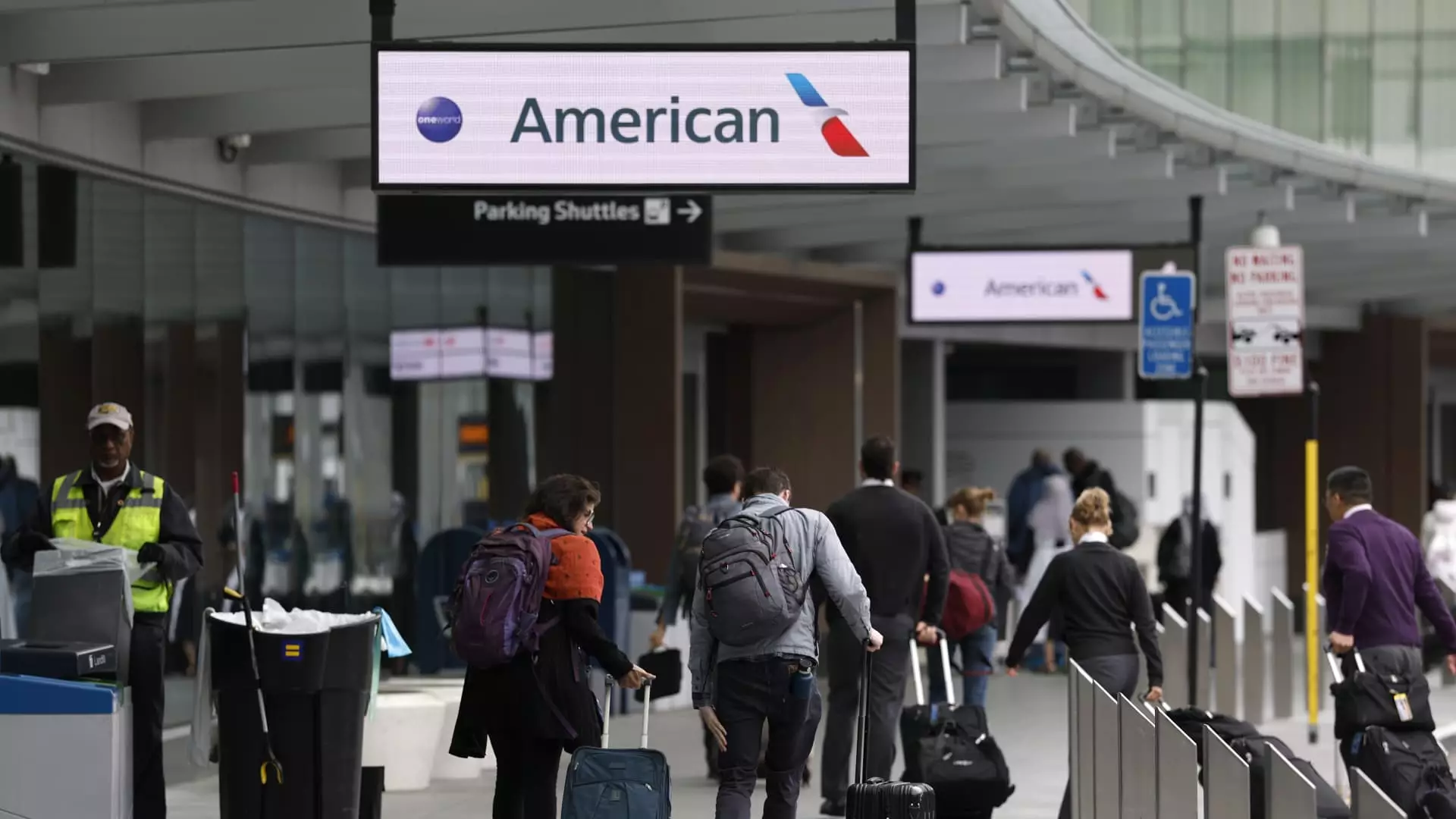Recent warnings from airline CEOs are echoing alarm bells throughout the industry — signals suggesting that a storm is brewing in domestic travel. Corporate travel, traditionally a sturdy pillar supporting airline revenues, appears to be faltering under the weight of economic unpredictability. The insights shared by American Airlines CEO Robert Isom during a quarterly earnings call encapsulate the plight many feel heading into 2025: “Nobody really relishes uncertainty when they’re talking about what they could do on a vacation and spend hard-earned dollars.” With consumers apprehensive about how to allocate their spending, it’s becoming evident that the atmosphere for discretionary travel is chilling.
The remarks from the CEOs at Delta, Southwest, and United airlines underline a chilling new reality: the projected increase in capacity won’t materialize as once anticipated. The optimism that carried expectations early in the year has faded, replaced by an acknowledgment that the marketplace is now riddled with volatility. It’s almost as if airlines are trapped in a paradox; too many seats yet too few eager travelers. What this essentially means is that prices must inevitably adjust — airlines, if they wish to keep their aircraft filled, have no choice but to lower fares.
Uncertainty’s Toll on the Travel Sector
The cautious sentiment surrounding corporate travel mirrors the experiences of households grappling with economic anxiety. The impact of President Trump’s erratic trade policies and a fluctuating stock market lay particularly heavy on consumers and businesses alike, creating an environment where travel becomes a low priority. As Conor Cunningham, a travel and transportation analyst at Melius Research, notes, “If uncertainty pops up, the first thing that goes away is corporate travel.” It’s the first domino to fall in an uncertain economy, as companies tighten budgets amidst unpredictable revenue streams.
What’s striking here is the dichotomy between resilient international travel and the tepid domestic market. Delta’s Ed Bastian reported a sharp increase in corporate travel early this year, yet, like a candle flickering in a gust, that growth has seemingly stalled. By contrast, U.S.-based travelers continue to flock overseas — a dichotomy suggesting a thirst for travel that remains unquenched, albeit allocated offshore as domestic options dim. This mandates a larger conversation about whether the airline industry is out of touch with evolving consumer desires or simply crestfallen by external economic forces.
The Realities of Pricing Pressure
The current situation is further complicated by the realities of pricing. The airlines are forced to grapple not only with dwindling demand but also with a notable decline in airfares. According to the Bureau of Labor Statistics, airfares dropped by a significant 5.3% in March compared to last year. For consumers, this may sound like refreshing news; however, low prices serve as an ominous indicator for airlines contemplating their bottom line. Hidden beneath the surface is the troubling acknowledgment that while demand remains present, it isn’t strong enough to absorb the new capacities airlines anticipated in 2025.
It’s not just the corporate sector struggling to keep its wheels afloat. Alaska Airlines’ CFO Shane Tackett openly admitted to challenges, indicating that the staggering fare reductions hearken back to difficult precedents, an unfamiliar realm for an industry that has only recently seen a resurgence. Tackett’s reflections ignite a crucial dialogue about consumer behavior in the current economic landscape and whether airlines are adapting to the shifting paradigm effectively.
The Elephant in the Room: Hope for Recovery Amidst Chaos
In the broader industry conversation, there’s an undercurrent of hope. Some executives maintain that demand, while not peaking, remains relatively healthy. However, the sentiments shared during these earnings calls often teeter on the edge of optimism mixed with trepidation. Isom’s confidence that “certainty will restore the economy, and I think it will restore it pretty quickly” exposes the fragility of the airline industry’s anticipatory strategies. As travelers cautiously step out of their comfort zones, the stakes are raised for airlines, which must quickly recalibrate itself to meet the shifting demands of a wary passenger base.
Ultimately, the fabric of the airline sector is undergoing a dramatic and unpredictable change, weighed down by economic uncertainties and evolving consumer expectations. The potential brewing recession isn’t merely a forecast; it’s an ominous harbinger that could reshape the architecture of air travel for years to come. The bottom line is stark and clear: if airlines cannot navigate these challenges with agility, they risk losing their place in an increasingly competitive market, one where travelers demand more than just a ticket — they seek reassurance for their investments in personal experiences.


Leave a Reply